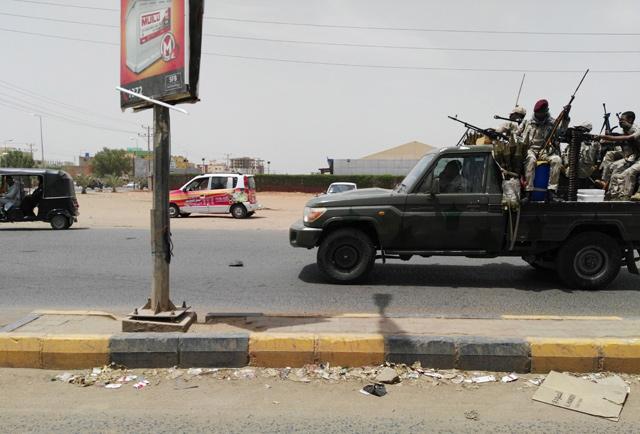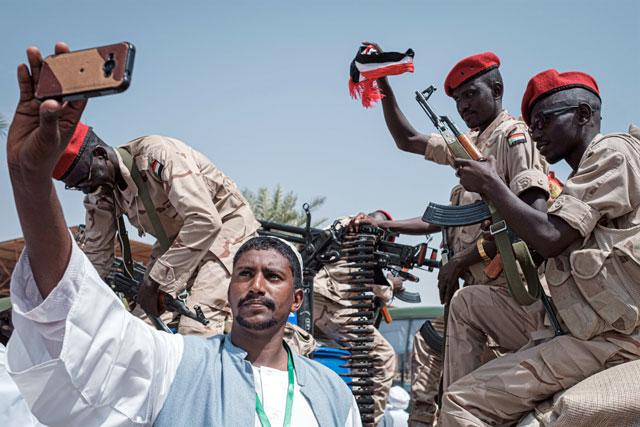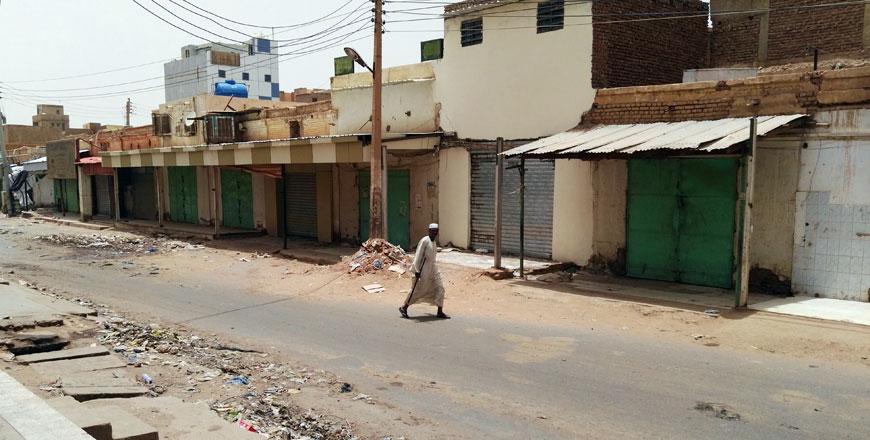You are here
How the crisis in Sudan unfolded
By AFP - Jun 09,2019 - Last updated at Jun 09,2019

Sudanese security forces drive through a main road linking Omdurman with its twin city Khartoum on the first day of a civil disobedience campaign across Sudan on Sunday (AFP photo)
KHARTOUM — The deadly crackdown by security forces on protesters in Sudan follows a building standoff between the ruling military and demonstrators demanding civilian rule.
The unrest started in December 2018, when citizens revolted against a tripling of the price of bread.
In April demonstrators launched a sit-in in front of the military headquarters in Khartoum to demand the departure of the regime of long-time president Omar Al Bashir.
He was ousted by the army a few days later, but the protesters remained in place in their thousands to press their demand for the military to cede power.
On June 3 security forces broke up the sit-in, launching a crackdown that left more than 100 dead in just a few days.
Here is a summary of events leading up to the military's move to end the long-running protest.
Talks break down
On May 20, after several breakthroughs, talks between the ruling military council and protest leaders reach a deadlock over who should head a new governing body which should oversee a three-year transition to civilian rule.
Protest leaders insist a civilian must head the new sovereign council and that civilians should make up the majority of its members, proposals rejected by the ruling generals.
Islamist movements back the military in the hope it will keep Sharia, Islamic law, in place since a 1989 coup.
On May 28-29, thousands of workers in both the public and private sectors strike across the country to pressure the military rulers.
Bloody crackdown
On June 3, men in military fatigues move in on the protest camp outside the army headquarters and disperse the thousands gathered there with force.
More than 100 have been killed and hundreds wounded since the start of the crackdown, according to the central committee of Sudanese doctors, close to the demonstrators.
Internet connectivity is disrupted.
A day later the military announces that all previous agreements with protest leaders on the transition are scrapped and that elections will be called "within a period not exceeding nine months".
Protesters denounce a putsch.
In Khartoum and across the country, the Rapid Support Forces (RSF) — paramilitaries with origins in the 16-year-old war in the western region of Darfur — are thought to have been behind the crackdown.
They are accused of atrocities, including attacks on hospitals.
The international community demands an end to the violence and resumption of dialogue.
Civil disobedience
On June 5, as gunfire crackles across the capital, the army says it is open to negotiations "with no restriction".
Protest leaders turn down the call for talks with the military council "that kills people".
Saudi Arabia expresses "great concern" at developments and calls for a resumption of dialogue.
Mohamed Hamdan Dagalo, deputy chief of the ruling military council and head of the RSF, says the country will not be allowed to slip into "chaos".
Opposition figures are arrested on June 8, a day after meeting Ethiopian Prime Minister Abiy Ahmed who had travelled to Khartoum as a mediator.
On June 9, police fire warning shots and tear gas to disperse demonstrators building roadblocks in the capital, in response to a call by protest leaders for "civil disobedience" across the country.
Markets and shops are closed in several Sudanese towns and cities.
Related Articles
KHARTOUM — Sudan's army ruler Wednesday called on protest leaders to resume talks on the transfer of power without any conditions, as tensio
KHARTOUM — Four people were killed in Sudan on Sunday as protesters launched a civil disobedience campaign against the military after a bloo
KHARTOUM — A probe into a deadly June raid on a Khartoum protest camp revealed Saturday that a feared Sudanese paramilitary group was involv



















